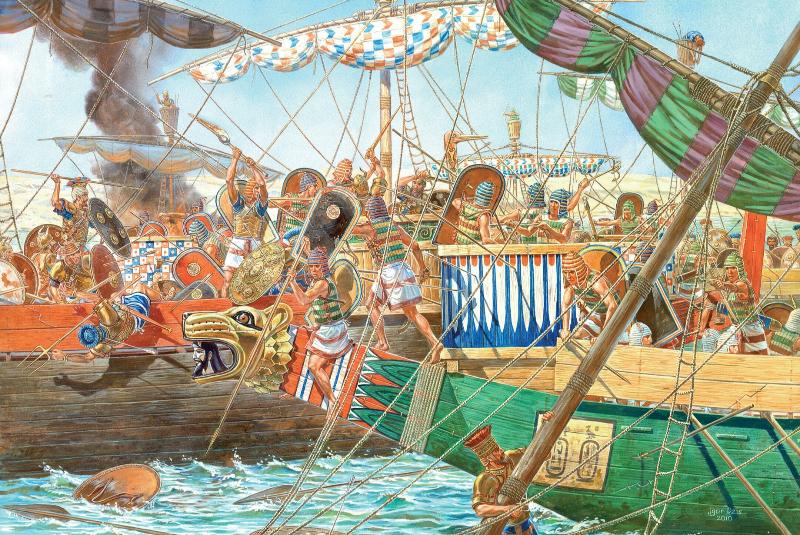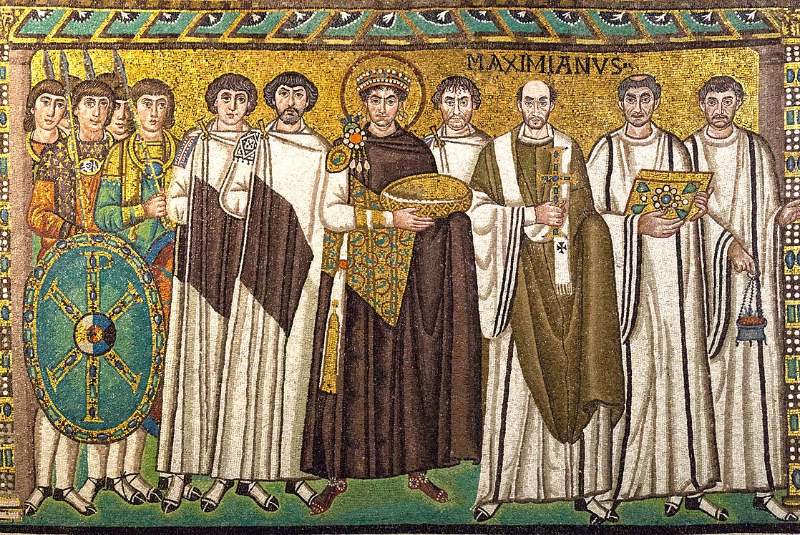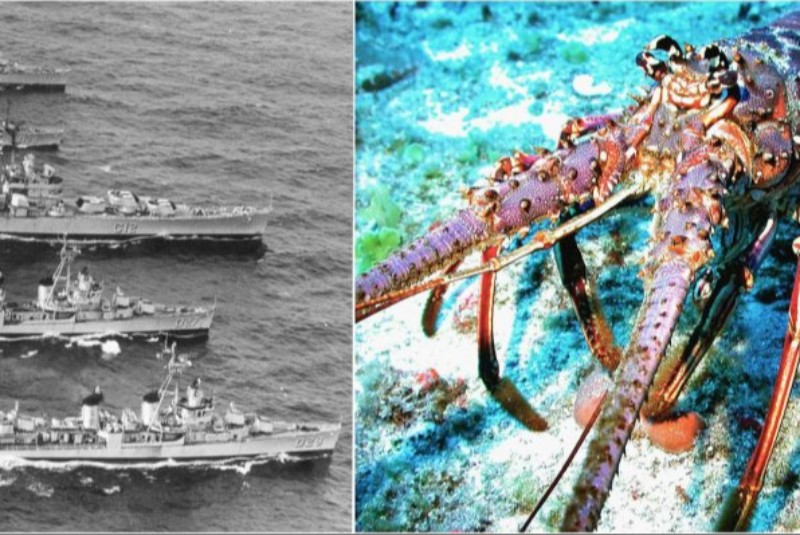In the vast annals of ancient history, the narrative of the Sea Peoples emerges as a compelling enigma, a phenomenon that sparks the imagination with images of fierce marauders and upheaval. Their forays into the annals of civilizations have left an indelible mark, inspiring countless debates and theories among historians, archaeologists, and scholars of the ancient world. These maritime warriors, as nebulous in origin as they are in their disappearance, were agents of change at a time when the established world order of the Bronze Age was showing signs of imminent collapse.

The Bronze Age Context
The late Bronze Age (circa 1600–1100 BCE) was a period of remarkable human achievement and sophistication. The Mediterranean basin, a crossroads of ancient civilizations, thrived on trade and cultural exchange. Empires like Egypt, the Hittite Empire, and Mycenaean Greece stood as pillars of this age, with elaborate palatial complexes and bustling harbors that facilitated a vibrant trade network. These connections fostered not only wealth but also the spread of ideas and technologies. However, this era's success hinged on delicate economic and political balances. The complex interdependency among states meant that turmoil in one region could send shockwaves through the entire system.
The Emergence of the Sea Peoples
Into this interconnected world stage stepped the Sea Peoples, a confederation of mariners whose origins have eluded precise identification. They are often depicted as a seafaring scourge, descending upon the civilizations of the Mediterranean with a ferocity that contributed to the systemic collapse of the age. The identity of these peoples is as varied as it is debated, with scholars considering a range of locales from the Aegean Sea to the far reaches of Western Europe as their potential homelands. What is agreed upon is their influence, which was as widespread as their attacks were feared.
The Egyptian Chronicles
Our primary lens through which we view the Sea Peoples comes from the Egyptians, particularly from the rule of Pharaoh Ramses III. His reign was punctuated by conflicts with these maritime raiders, immortalized in the mortuary temple of Medinet Habu. Here, the reliefs stand as a testament not just to the battles waged but to the significance of the Sea Peoples in the consciousness of the Egyptian empire. These depictions are more than simple chronicling; they are crafted narratives meant to exalt the pharaoh as the bulwark against the chaos embodied by the Sea Peoples.
Naval Prowess and Military Campaigns
The Sea Peoples were renowned for their naval capabilities, their vessels symbols of both freedom and terror on the Mediterranean waters. These were not mere roving bands of pirates but organized units capable of strategic military campaigns. They are depicted with horned helmets, round shields, and an array of weapons, suggesting a panoply of influences and origins. Their tactics were aggressive, and their mobility on the sea allowed for rapid attacks along coastlines and river estuaries, reflecting a level of sophistication in maritime warfare that was ahead of its time.
Theories of Origin
Theories abound regarding the push factors that propelled the Sea Peoples across the Mediterranean. Climatic changes, social unrest, and economic turmoil within their original territories are all plausible motivators. It's conceivable that a combination of push and pull factors—ranging from environmental stresses to the allure of the wealthy Bronze Age empires—drove these groups to undertake their vast migrations and incursions.
Archaeological Evidence
The archaeological record across the region reveals a patchwork of destruction and resettlement during this tumultuous period. The layers of ash and ruins found in excavations throughout the eastern Mediterranean often coincide with the period of the Sea Peoples' activity. Yet, amidst the destruction, a cultural mosaic emerges, showing the blending of Aegean, Anatolian, and Levantine elements that suggest a complex interaction of cultures, possibly through the assimilation of the Sea Peoples into the indigenous populations.
The Connection to the Philistines
Among the Sea Peoples, the Peleset have been identified as the biblical Philistines. This connection is supported by archaeological findings in regions such as Ashkelon and Ekron, which reveal an intrusion of foreign, Aegean-style pottery, architecture, and burial practices. These sites offer tangible evidence of the Philistines’ establishment in the southern Levant and their integration into the fabric of the region, reflecting a broader pattern of migration and cultural intermixing.
Impact on the Bronze Age Collapse
The correlation between the Sea Peoples' raids and the Late Bronze Age collapse suggests that their impact was both immediate and profound. Cities burned, trade networks disintegrated, and empires that had stood for centuries crumbled seemingly overnight. The invasions disrupted agricultural production and trade, which were the lifeblood of these complex societies. This turmoil paved the way for the emergence of new political structures, such as the Philistine city-states and the Aramean kingdoms, which filled the power vacuums left by the collapse of the great empires.
The End of an Era
The disorder ushered in by the Sea Peoples coincides with the transition from the Bronze Age to the Iron Age. This transition was not merely chronological but represented a technological and cultural metamorphosis. The introduction and spread of ironworking technologies, which were less resource-intensive than the production of bronze, contributed to the democratization of warfare and the rise of new social structures. The old world dominated by palatial complexes and elite warrior classes gave way to more decentralized and varied forms of governance.
Legacy and Modern Interpretation
The narrative of the Sea Peoples, while it may be rooted in destruction, also embodies the resilience and adaptability of human societies. They are a poignant illustration of how migratory movements and cultural interactions can profoundly shape the course of history. In modern scholarship, the study of the Sea Peoples benefits from advancements in maritime archaeology and genetic research, offering the potential to unveil new aspects of their identity and migratory patterns.
Their story is a powerful reflection on the fragility of civilizations, reminding us that even the most advanced and interconnected societies are not immune to the forces of change. The Sea Peoples’ legacy is etched into the fabric of history, a testament to the complex interplay of environmental, economic, political, and military factors that drive societal transformations.
The Sea Peoples encapsulate the dynamism of ancient history—a force that both destroyed and created, that disrupted and integrated, and that ultimately played a pivotal role in the transformation of the ancient Near East. As we continue to excavate their past, we uncover not just the story of a group of ancient mariners but a narrative that echoes into our present, reminding us that the tides of human destiny are as ever-changing as the sea itself.




